
“Trail” is a word adopted from the English language meaning “mixture of hiking and running”. It’s practiced in the wild, on footpaths and tracks, marked or not. The idea of “long distance” is sometimes associated to Trail running however it isn’t its main feature.
Walking is a gentle exercise, recommended to most people, whatever their age or fitness level. Mixing running and walking through different sections of a soft gradient terrain is accessible to most. You can then increase the challenge by lengthening the running sections, increasing the overall run duration and/or the course’s gradient. The trail markings in Morzine give information on the difficulty of the routes, their overall distance and gradient. Maps provide indications regarding the time needed to cover the route, based on an average running speed. You can therefore make a well-informed choice, while remaining conscious of the mountain environment, checking weather conditions and the route’s technicality. For those who don’t fancy going it alone, Morzine offers an initiation course at the start of summer. This course will also let you to discover new routes and meet other runners to share the fun, insights, and to boost your motivation… Generally, a medical is recommended, in particular, a heart check up to ensure you can deal with the effort needed for high gradient and altitude.
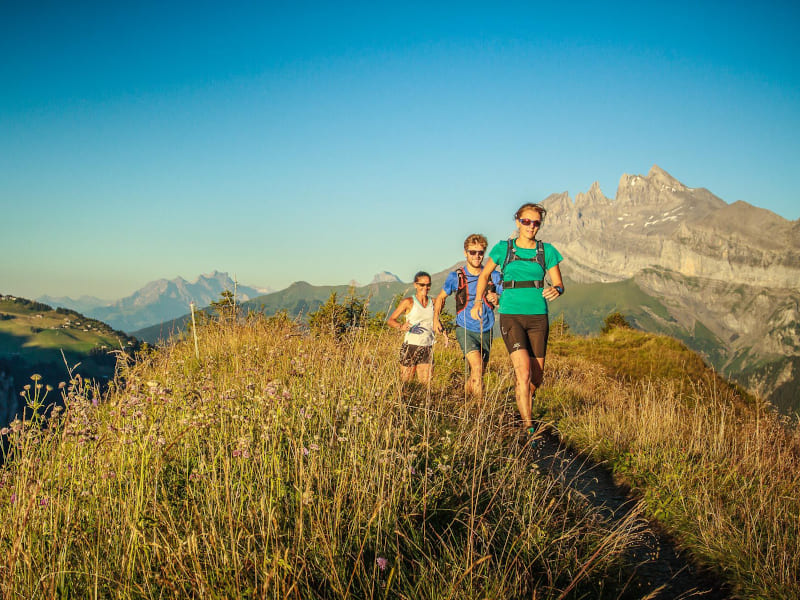
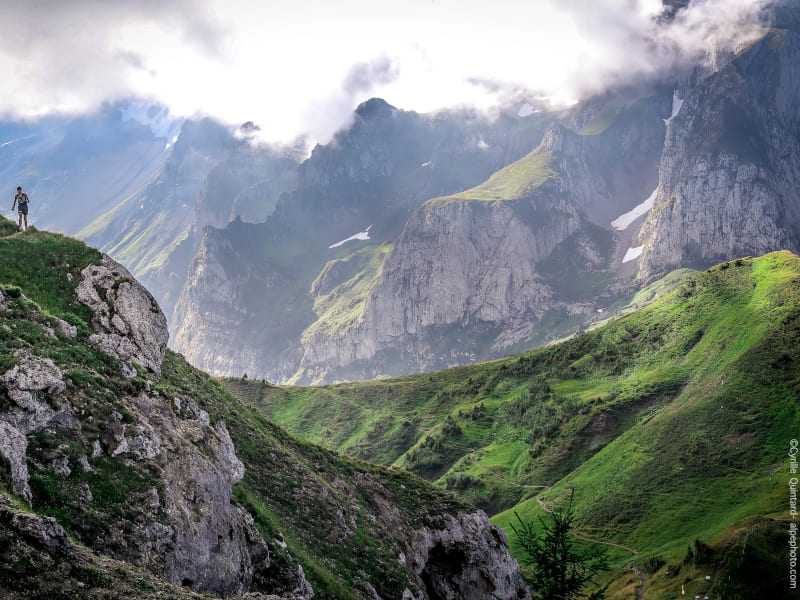
The mountain environment requires you to use common sense :
- Find out about weather conditions which are the #1 risk factor in the mountain, and check the status of the routes with the Tourist Office or by asking a mountain professional (such as a mountain guide).
- Plan your route according to those conditions, your level and fitnes.
- Let your companions know where you’re going and when you expect to be back.
- For long runs, take a fully charged mobile phone, water and food supplies to last you at least twice the expected duration of your run, a whistle and survival blanket are essential.
- A small first aid kit including antiseptic wipes, plasters, special blister plasters, an elastic bandage can prove useful.
There are a few items to add on top of the usual light and breathable running gear :
- Special shoes, reinforced at the front to deal with uneven terrain, and small crampons for better grip, neither too heavy nor high-topped.
- One or 2 extra layers, depending on weather conditions, one insulating (such as micro fleece or soft shell), and the other water-repellent or waterproof (Gore-Tex ® for example).
- A small, light and well-adjusted backpack to carry clothing, water supplies…
The use of poles is not essential but may help save your body’s energy on high gradient terrains. Should you decide to get some, favour light retractable ones.
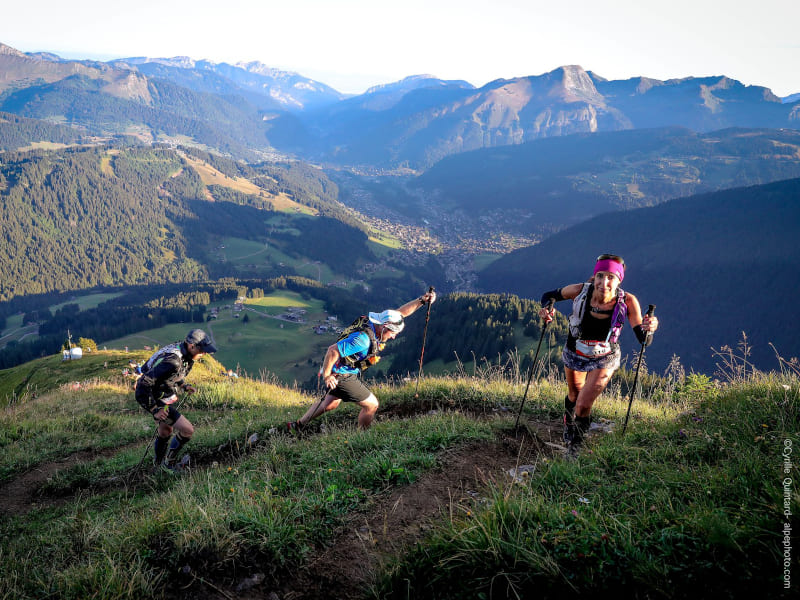
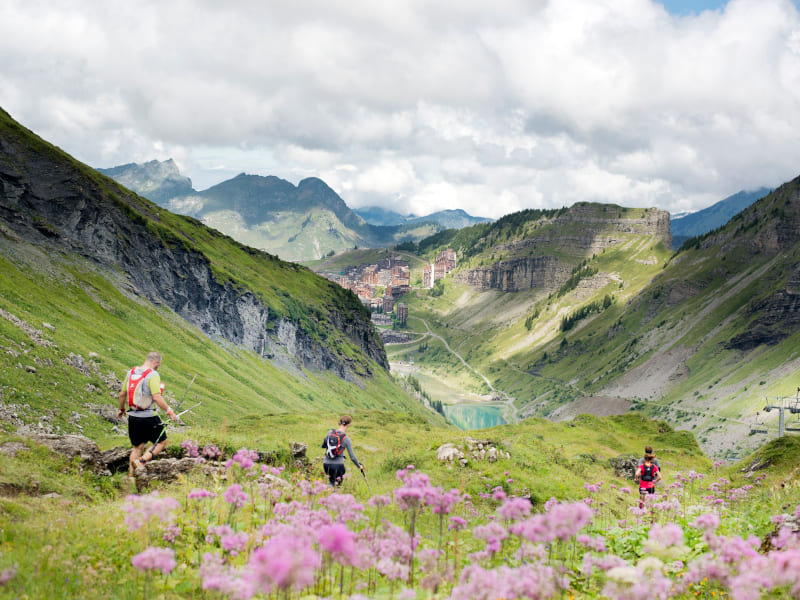
The routes are colour coded according to their level of difficulty (green, blue, red, black). Information is given relative to distance, gradient and average length. Based on this information, you can choose a route which matches a distance or time length that you have already covered or approached before.
As long as you are in a “leisure/sport” state of mind and not in search of maximum performance, you obviously always have the option to walk part of the high gradient and/or difficult parts of the track.
Then you’ll have to adjust your choices according to experience and feelings. Networking sites (forums, Facebook page, specialised websites…) provide platforms for information exchanges.
Warning: the terrain’s technical aspect also has to be part of your route choice, especially when it comes to paths which can be rough and exposed. In doubt, don’t hesitate to ask a professional.
There are no specific requirements if your run stays below one hour long, apart from a good supply of water in case of hot weather conditions.
From one hour and above, you should drink some water every 15 minutes, and eat something every hour (energy bar, dried fruit or similar…)
For longer runs, above several hours, you’ll have to think about varying the supplies, and bringing in savoury foods as well as sweet, to avoid nausea and monotony (comforting effect).
Before the run, it’s recommended you stay well hydrated by drinking about 2 litres of water a day for a week prior to your meeting with the mountain.
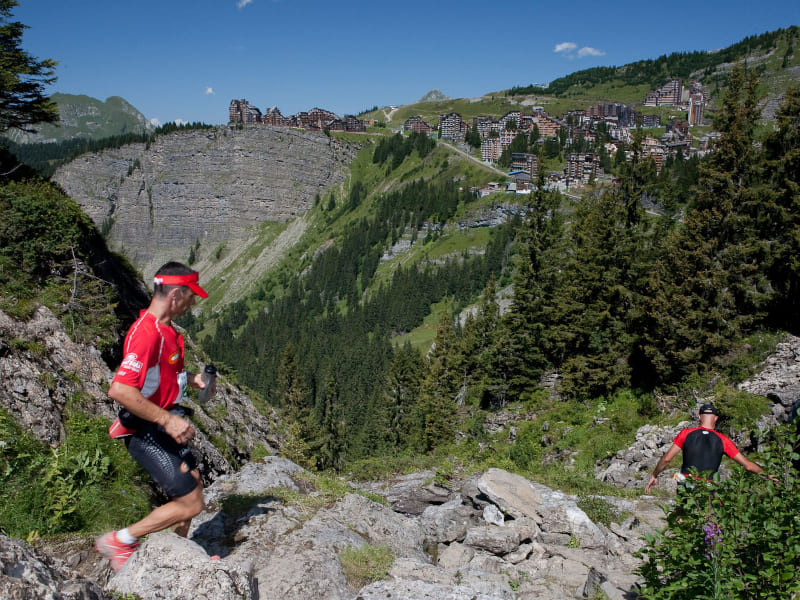

Running with other people helps with motivation and reduces risks however take care to avoid the “group effect” which can push less able people too far over their limits.
A special course remains the best way of approaching trail running and will provide strong foundations on which to improve. Otherwise, you should aim to respect the same training principals as for running, including special sessions focussing on managing uphill and downhill gradient. This kind of training can be hard on the body and needs to be done progressively.
Morzine offers a one week training course at the start of summer with runs led by professionals, physical testing, topical lectures (on nutrition, osteopathy, equipment, physical preparation). A big outing with a meal in alpine pastures, an end of course party and a multi-activity pass are included in the offer, to fully enjoy all that Morzine has to offer to its visitors.
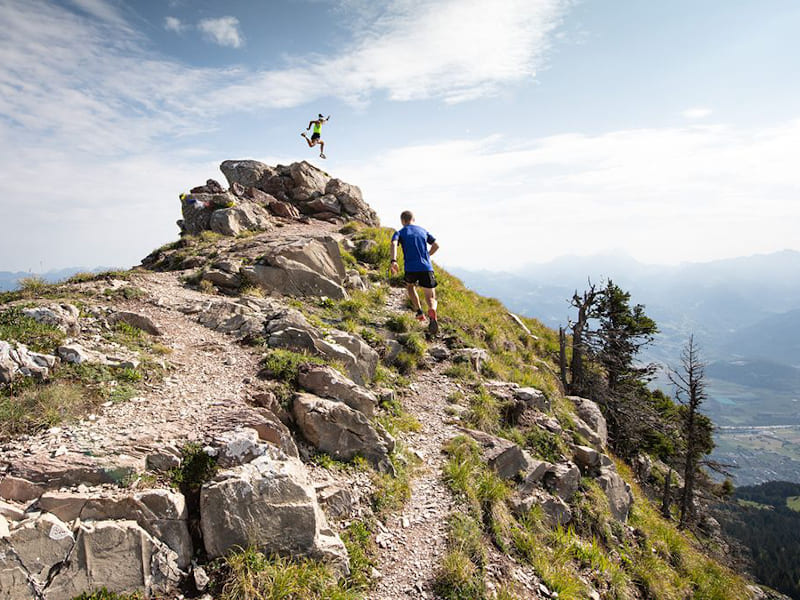

The race calendar is full of different types of challenges for every level, from 3km walks to 150km Ultratrails!
The prospect of a competition can be a motivation and make you progress factor. Pushing yourself and managing the course can lead to great feelings of personal achievement.
The purpose of taking part in a race is not only to achieve great performance. Competitions take place in beautiful natural settings, and trail running races offer a great chance to discover new routes, without thinking too much of the itinerary.
In any case, ensure you pick a competition which matches your level. Don’t overestimate yourself and favour a gradual approach in order to avoid discouragement.



